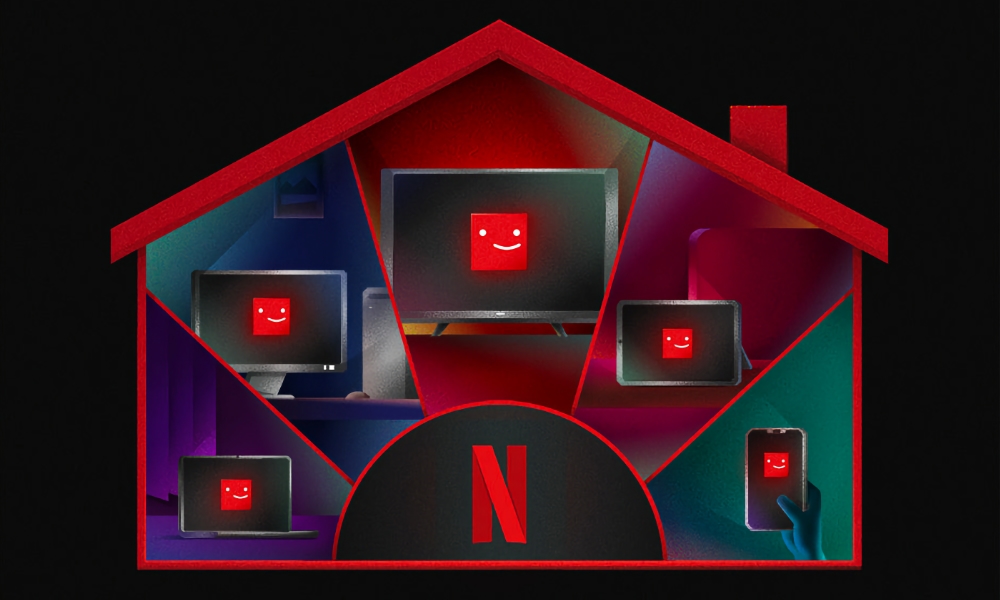Netflix Password Sharing Crackdown Officially Hits the US | How It Works and What It Costs
 Credit: Oscar Vargas / Unsplash
Credit: Oscar Vargas / Unsplash
Toggle Dark Mode
As of today, Netflix has officially begun cracking down on password sharing in the US with the launch of its “Extra Member” plans for customers who want to invite friends and extended family members to access their household Netflix account.
Although Netflix once took a fairly loose approach to sharing passwords with close friends and family members, the company’s official stance was that a Netflix account was solely for use by people who live together regularly in the same household. Company executives acknowledged some gray areas, such as college kids living away from home, but ultimately never enforced any meaningful restrictions.
As a result, some Netflix customers became accustomed to sharing their passwords far and wide. Suddenly, one Netflix account became fair game for a dozen of your closest friends and your mom’s cousin Ellen’s husband’s half-sister’s uncle.
So, it wasn’t all that surprising that as Netflix began losing potential revenue from those freeloading off of others’ accounts, it began looking for ways to crack down on password sharing.
However, the company eventually realized it was easier to take the “if you can’t beat ‘em, join ‘em” approach — or, more accurately, “if you can’t beat ‘em, make money off ‘em.” In early 2022, it began trialing a new set of plans in South America that would “encourage” customers to pay a small fee for sharing Netflix outside of their households.
In the meantime, Netflix became more adamant that “A Netflix account is for use by one household — with no exceptions for college kids in dorms, elderly relatives, or anyone else.
The crackdown began in earnest earlier this year when subscribers in Canada, New Zealand, Portugal, and Spain were informed that they would need to abide by the new policy and sign up for “Extra Member” sub-accounts for anybody they wanted to share their service with who didn’t live in their own household.
Extra Member Accounts Come to the US
Today, Netflix published an “Update on Sharing” with a copy o the email it’s begun sending out to “members who are sharing Netflix outside their household in the United States.”
Your Netflix account is for you and the people you live with — your household.
The email adds that Netflix can be used when away from home, such as “on your personal devices or a TV at a hotel or vacation home,” but reiterates that this is only for those who live in the same household as the primary account holder.
It goes on to explain how Netflix customers can check and control how their account is used, suggesting that they sign out of any devices that “shouldn’t have access” and change their password to prevent unauthorized access.
However, if a Netflix customer wants to share their service with someone outside of their household, their options are to transfer that person’s profile to their own Netflix account or buy an extra member account.
The kicker is that the cost of an extra member account is $7.99/month — that’s $1 more than Netflix’s Standard with ads tier, which offers nearly all the features of the $15.49 Standard plan, including two supported devices, with the only downside being that you have to sit through a few ads. By contrast, the $7.99 Extra Member slots get only one profile and can only stream to one device at a time.
The other catch is that Extra Member accounts are add-ons — they’re billed to the primary account holder on top of their regular plan, not the person who wants the extra member account. That may be fine for actual family members or close friends, but it won’t be practical for more casual arrangements. It’s a safe bet that Netflix realizes this and expects most folks will opt to boot those they’ve been sharing passwords with off their Netflix plan entirely, forcing them to get their own plans — and that’s what the new Transfer Profile feature is for.
Detecting and Enforcing Password Sharing
Based on Netflix’s statement that it sent out the email “to members who are sharing Netflix outside their household in the United States,” it’s a safe bet that the company has already identified which accounts are the most likely culprits.
However, the email message and announcement are taking a positive approach, giving customers the benefit of the doubt. We’ve already seen indications in Canada and elsewhere as to how Netflix will enforce the new password-sharing rules. As it begins phasing these in, viewers who aren’t using their own accounts can expect to find their access blocked.
This will be especially true when it comes to typically stationary devices like smart TVs. By all accounts, Netflix is being quite firm on tracking where it’s being viewed through its apps for smart TVs and set-top boxes like the Apple TV, and somebody who tries to watch Netflix on a TV that’s not in the same household as the primary account holder will likely soon find that this no longer works at all.
However, there seems to be a bit more wiggle room for mobile devices. Since Netflix recognizes that people want to access the service from multiple locations, it can’t afford to be nearly as draconian in locking down access to a single location on your iPhone or iPad.
Instead, Netflix requires that the app on your mobile device be connected to your home network — the same one you’ve set as the primary location on your TV — at least once a month.
This shouldn’t be a problem for most customers, although those who rarely use the Netflix app on their iPhone or iPad may want to make sure they quickly open it and let it connect before they leave home just to ensure it’s re-registered.
It also offers some leeway for close family members like college-aged kids who may be living in a dorm in the same region. Instead of just coming home every couple of weeks to do their laundry and get a home-cooked meal, they can also drop in to renew their Netflix connection.







